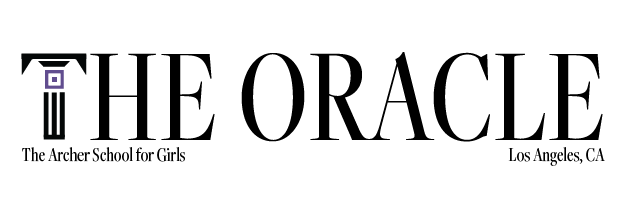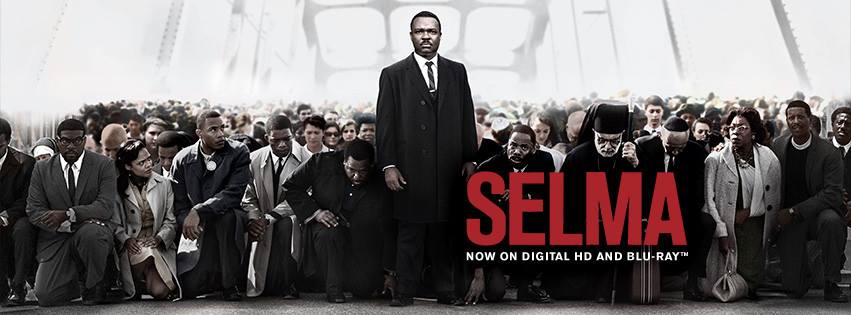During the 2015 Academy Awards, “Selma” — the Martin Luther King Jr. biopic — won Best Picture. Other than the nomination of director Alejandro González Iñárritu, there were no people of color nominated in any other major category. Image source: Selma’s Official Facebook Page.
‘There’s still a lot of work to be done’: Archer students, faculty reflect on racial representation in the media
May 19, 2018
Mass media has been around for 600 years. Whether it be print, recordings, movies, radio, television, internet or social media, media has been an influential factor in shaping public attitude and sentiment since the late 15th century. However, the issue of racial representation and inclusivity still remains today.
Defining Racial Representation in the Media
The matter of racial representation gained a lot of public attention during the 87th Academy Awards in 2015.
Other than the best picture victory for the Martin Luther King Jr. biography film, “Selma,” and a best director nomination for Alejandro González Iñarritu, there were no people of color nominated in any of the major categories. This resulted in the trending hashtag #OscarsSoWhite, and it was used to protest the underrepresentation of people of color in the Academy Award nominations.
The hashtag was created by April Reign, the managing editor for BroadwayBlack.com and the Senior Director for Marketing at Fractured Atlas, a non-profit technology company that provides business tools for artists.
Reign created the hashtag to challenge and improve underrepresentation in Hollywood and beyond, and it has remained relevant since its creation during 2015 Academy Awards.
The tweet that started it all. #OscarsSoWhite https://t.co/PNBUQ7l23g
— April (@ReignOfApril) January 15, 2016
“#OscarsSoWhite is very much alive and as relevant as when I created it. And until we are no longer lauding firsts after a 90-year history [of the film academy], until we can no longer count a traditionally underrepresented group’s number of nominations in a particular category on our fingers, there will be more work to do,” Reign said in an interview with the Los Angeles Times at the Sundance Film Festival.
Cybele Zhang ‘18, founder and co-leader of Archer’s Asian Culture Club, provided her own definition of racial representation in the media.
“Racial representation is when media, in particular, has diverse members — whether that be the actors, the characters or the people producing and directing the media,” Zhang said. “To have racially diverse media, we want to bring in different voices so their stories are told too.”
Similarly, Jolina Clement, a Diversity and Inclusion Conference coordinator, described racial representation in the media as the idea of everyone in the community seeing themselves represented, whether that is in television, movies, fictional stories, non-fictional stories, the news, etc.
“When thinking about [racial] representation in the media, I often ask the question: Whatever the media puts out, does it accurately represent who we are as people?” Clement said.
Room for Improvement
Although Archer has taken many steps to increase diversity on campus, some diversity and inclusion leaders on campus believe there is room for improvement.
“Archer does a pretty good job of actively seeking out diverse community members, but I think we can always do a little bit more — specifically speaking as someone who identifies as multi-racial and as Asian American,” Zhang said. “I also think specifically within the curriculum at Archer, a lot of our English and history classes tend to have a primarily white narrative — especially within the media we consume in those classes, such as books, film clips, etc. I know there are attempts to include more voices, and I think we can just continue to do that.”
According to Zhang, a beneficial way to include more voices in English and history curriculum would be to bring in authors, historians and filmmakers that come from diverse backgrounds. This not only would enable girls to connect to the curriculum, but it would also allow for a diversification of stories and perspectives in the curriculum.
On a more global scale, there are conversations about the work that still needs to be done to improve diversity in the media. According to the 2018 UCLA Hollywood Diversity Report, less than fifteen percent of lead actors in films are people of color. Additionally, only 13 percent of film directors are people of color.

“People say we got all these ‘diverse’ nominees now, so #OscarsSoWhite must be done. But we don’t. We have films that reflect the black experience, but there weren’t any films that reflect the Latinx experience,” Reign said, in an interview with The Verge in 2017, the week after the 2017 Academy Awards nominees were announced. “We have cultural appropriation of the Asian-American and Pacific Islander community. I’m still waiting on [a] romantic comedy from the LGBTQIA community. There’s still a lot of work to be done.”
Recent Progress
Despite the shortcomings, new media platforms have given voice to underrepresented races and ethnicities. With new forms of media that exist — such as Youtube or Netflix — content is more closely connected to the people producing it, which allows for a diversification of stories and perspectives.
“Having outlets like Youtube, anyone can tell their stories and document their own lives,” Zhang said. “I think that broadens everyone’s perspective of what stories are. Having media outlets that emphasize experiences that I won’t know from my own family or my own history, can broaden my opinion and my own perception of myself in the world.”

According to Clement, when she was growing up, it was a very infrequent occurrence to see someone in the media who she would identify with racially and ethnically; partially because these new types of platforms did not exist, but also just because it was uncommon to see a person of color in the media.
“There was a point in high school and college where I would cut out pictures of Asian and Hispanic people in magazines and newspapers. I remember my college roommates actually thought I was completely ridiculous because they didn’t understand, and they couldn’t relate. So when I was young, [diverse representation] was very rare,” Clement said. “Now, there are all of these shows representing different people. Speaking from the Asian perspective, there are so many shows on TV now that represent not only Asian people but different kinds of Asian people. There’s still a lot of struggle and misrepresentation, but all the different communities that are now represented have multiplied and have diversified in a way that makes me feel optimistic.”
Zhang also believes that a diverse media is most important to impressionable young girls and teenagers, as this demographic consumes the most media and are particularly absorbent to its messages.
“I think it is especially important for younger children, who are developing and basing their senses of the world off of media, to see themselves in [media]. Recent initiatives, having characters like Moana for example, have shown girls that not everyone has to be white, or fit a certain stereotype,” Zhang said. “The fact that [characters] can look like them, act like them and talk like them gives young girls, especially, the confidence to be able to realize their own identity and sense of self.”
These conversations and recent progression are reasons for optimism, according to Reign, yet nothing can continue to be done unless the public uses their voices to stand up for what they believe in.
“I think if we are not diligent and our voices are quieted, things can always be rolled back. Look what’s going on with voting rights today, which is a much more important issue than winning an award, or who gets to star in a movie. Look what’s going on with respect to the rights of immigrants today,” Reign said in a 2017 interview with Vanity Fair. “So yes, things can always be rolled back, but we will continue to push forward as much as we can to continue the progress that has been made so far.”

